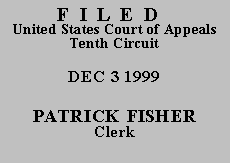

| U.S. STEEL MINING COMPANY, INC., |
|
| v. | |
| DIRECTOR, OFFICE WORKERS'
COMPENSATION PROGRAMS,
United States Department of Labor,
- - - - - - - - - - - - JOYCE HOLYBEE, Claimant. |
Holybee is entitled to survivor's benefits if pneumoconiosis was a "substantially contributing cause or factor leading to" the death of her husband, Ronald Holybee ("Miner"). 20 C.F.R. § 718.205(c)(1). A survivor is entitled to benefits if pneumoconiosis hastened death to any degree. Northern Coal Co. v. Director, OWCP, 100 F.3d 871, 874 (10th Cir. 1996). Pneumoconiosis includes "any chronic pulmonary disease resulting in respiratory or pulmonary impairment significantly related to, or substantially aggravated by, dust exposure in coal mine employment." 20 C.F.R. § 718.201. Chronic obstructed pulmonary disease ("COPD"), if substantially aggravated by coal dust, is a chronic pulmonary disease which qualifies as pneumoconiosis. Labelle Processing v. Swarrow, 72 F.3d 308, 311 (3d Cir. 1995). The existence of pneumoconiosis may be established by a physician exercising sound medical judgment based upon objective medical evidence. 20 C.F.R. § 718.202(a)(4).
Miner ceased working for U.S. Steel in 1981 after 26 years of employment in the coal mining industry. Based on a diagnosis of COPD and emphysema, Miner was awarded Black Lung disability benefits. Miner had continuous respiratory and pulmonary problems until his death in 1991. Claimant filed for survivor's benefits as his widow. The ALJ initially decided that U.S. Steel was precluded from denying that Miner suffered from pneumoconiosis, but the Benefits Review Board reversed and remanded the claim with instructions that Claimant had to establish each element of her claim. On remand, the ALJ reviewed the evidence in the record and awarded benefits. The BRB affirmed the ALJ's decision and U.S. Steel brought this appeal.
This court must affirm the ALJ's determination of benefits if it is supported by substantial evidence. Garcia v. Director, OWCP, U.S. Dept. of Labor, 869 F.2d 1413, 1415 (10th Cir. 1989). The record contains medical records, reports, and testimony concerning Miner's condition.
Dr. Kelley's report provided the basis for Miner's award of disability benefits. In 1984 Dr. Kelley diagnosed Miner with emphysema and COPD. Dr. Kelley reported that Miner's coal mine employment aggravated his lung condition because exposure to dust can exacerbate the symptoms of COPD and emphysema. In May, 1989 Dr. Kelley's medical records note that Miner suffered from pneumoconiosis and Dr. Kelley included coal workers' pneumoconiosis as part of the "Final Diagnosis" relating to Miner's hospitalization for acute bronchitis in 1989.
Dr. Repsher provided reports and testimony that Miner did not suffer from pneumoconiosis and attributed Miner's COPD and emphysema solely to cigarette smoking. Dr. Repsher provided the opinion that Miner died of heart disease and that Miner's pulmonary disease did not cause his death.
Dr. Comer, who was Miner's treating physician for heart disease, provided a report that lung disease was the most significant contributing factor in causing death and that lung disease was the primary cause of Miner's final illness.
Dr. Kennedy provided a response to an inquiry from the Department of Labor regarding whether pneumoconiosis was a significant contributing factor in Miner's death. Dr. Kennedy responded "Yes, miner clearly had well documented end stage lung disease."
The reports of Dr. Kelley and Dr. Kennedy provide substantial evidence that the Miner's COPD constituted pneumoconiosis under the legal definition. U.S. Steel contends that the opinion of Dr. Repsher refutes the reports of Dr. Kelley and Dr. Kennedy because Dr. Repsher testified that Miner's COPD and emphysema were caused solely by smoking. The ALJ found that Dr. Repsher's opinion regarding smoking was speculative because there was no evidence that Miner was a sensitive smoker susceptible to emphysema despite his moderate smoking history. Accordingly, the ALJ did not attribute great weight to Dr. Repsher's opinion. Even if there were a firm basis for Dr. Repsher's opinion, we are not at liberty to weigh conflicting evidence to reverse the determination of the ALJ. There is substantial evidence in the record to establish that Miner suffered from chronic pulmonary disease substantially aggravated by dust exposure in coal mine employment. 20 C.F.R. § 718.201.
In addition to the existence of pneumoconiosis, Claimant must also establish that pneumoconiosis substantially contributed to Miner's death. The death certificate identified COPD as the cause of death. Dr. Comer identified lung disease as the most significant contributing factor to Miner's death. Dr. Kennedy corroborates this evidence with his conclusion that pneumoconiosis was a significant contributing factor in Miner's death.
U.S. Steel sought to controvert this evidence through the testimony of Dr. Repsher, who testified that heart disease was the cause of Miner's death. Because Dr. Repsher's opinion was based on medical tests performed more than a week prior to death and his testimony was couched in terms of probabilities and generalities, the ALJ concluded that Dr. Repsher's opinion failed to prove that pneumoconiosis was not the cause of death. Even if we were to disagree with the ALJ concerning the relative weight to be given the conflicting evidence, the record clearly contains substantial evidence to support the conclusion that COPD was a substantial contributing cause leading to Miner's death. 20 C.F.R. § 718.205(c)(1). The ALJ's award of benefits is supported by substantial evidence.
AFFIRMED.
ENTERED FOR THE COURT
Thomas M. Reavley
Senior Circuit Judge
*.This order and judgment is not binding precedent, except under the doctrines of law of the case, res judicata, and collateral estoppel. The court generally disfavors the citation of orders and judgments; nevertheless, an order and judgment may be cited under the terms and conditions of 10th Cir. R. 36.3.
**.Honorable Thomas M. Reavley, United States Senior Circuit Judge for the Fifth Circuit, sitting by designation.